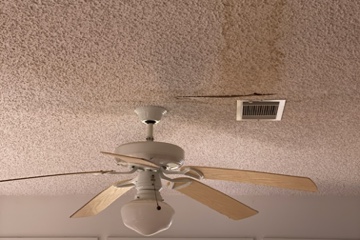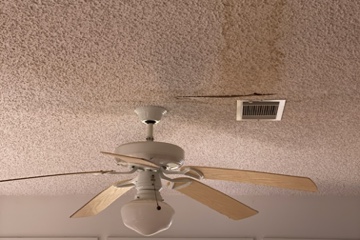

While April closes in on itself, creeping gradually into the mild heat of May, the April weeks won’t just provide the showers for which May’s flowers are known; rather, they will evolve expectedly into the hurricanes that barrel annually across Florida’s First Coast come June.
And with the rainy season arrives the renewed possibility that water and moisture will encroach upon your property, inserting themselves into whatever cracks and crevices are available for intrusion.
But is your home prepared to fend off such seemingly harmless trespassers?
The answer is “yes.” So long as you’re armed with the proper knowledge of how rain gets in and manifests its damage, you will be well-equipped to mitigate its presence in the coming months.
How Moisture Gets In
According to the University of Florida’s Division of Environmental Health & Safety, water damage may occur as a result of pipe breaks or bursts, leaking ceilings, flooding, sewer line backups, and more.
Particularly as rainstorms beat down more frequently in the spring and summer months, homeowners and residents should be wary of cracked home foundations, improperly sealed fireplaces, ruptured door and window seals, and overall poor indoor air circulation, as all of these act as potential obstacles to keeping moisture out.
After all, flooding aside, it is surface and air saturation that can both generate and perpetuate indoor mold and humidity. And the best way to fix the problem … is to prevent it.
One Intrusion, Multiplying Problems
The Indoor Air Quality Association (IAQA) stresses that, once moisture has entered your property, it is “critical” to tackle it within a 24-hour period. Otherwise, the moisture will spread and mold will begin to bloom inside.
Additionally, mold and moisture can take a toll on the overall longevity of a building, as well as the efficiency of its energy usage.
“Wet or damp construction cavities (e.g., spaces between interior and exterior walls), attics and plenums are major sources of mold and can contribute significantly to indoor air quality problems,” according to the Environmental Protection Agency (EPA). “In addition, moisture can damage the structure and degrade the performance of insulation, increasing energy and operating costs.”
In total, water damage and moisture in your home are not only inconvenient — they are costly, hazardous, and difficult to remove once ignored.
What Actions Can I Take?
Reportedly 93% of all water damage can be prevented. In particular, the U.S. Department of Energy recommends using caulk around leaky faucets, ceiling faucets, and other areas of small leaks, as well as using weather stripping around windows and doors.
However, not all problems are small-scale enough to be tackled alone.
If you find yourself combatting extensive damage — or damage that is widespread throughout your property — it’s likely time for you to call your local water damage experts.
The good news is that you never have to be left alone to deal with indoor water damage, nor do you have to detect potentially-hazardous spots of mold on your own. Instead, call Luce Air Quality to test and investigate your property! Not only do we provide quick results, but we also offer you trusted, comprehensive solutions that will return your home to optimal satisfaction and safety.
We are your indoor environmental experts. Contact us today by calling (904) 803-1014!


